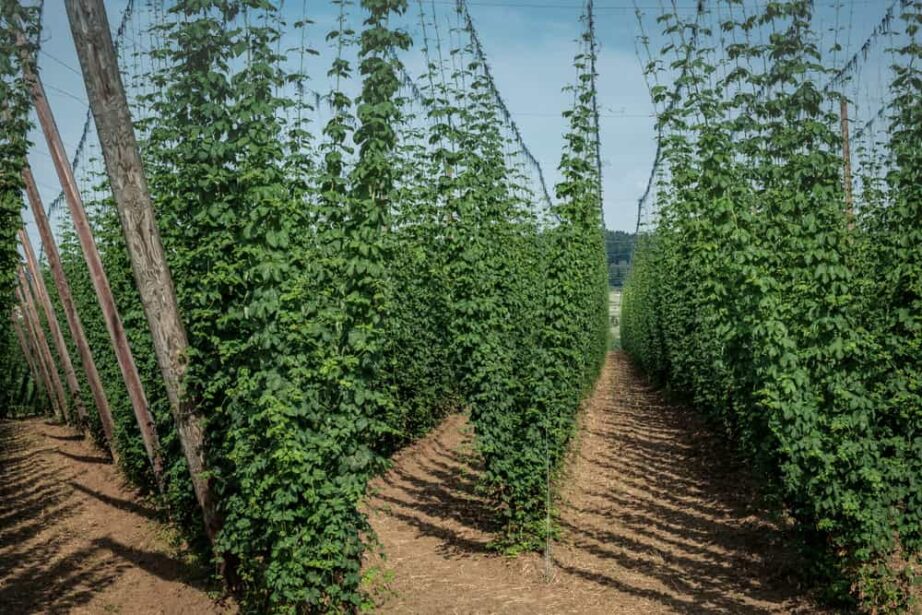Hops are a magical plant that is used to treat anxiety, improve appetite and brew delicious beers, but they can be a tricky plant to grow. That’s because hops are subject to a number of different problems.
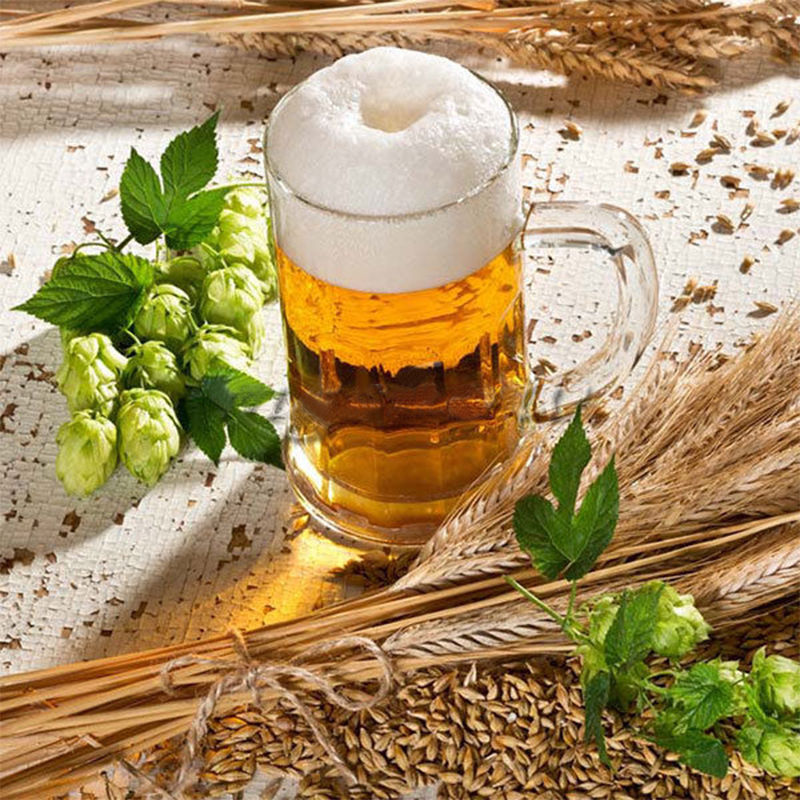
This leafy plant can grow up to 25 feet in the summer and dies back to the ground in the autumn. All that incredibly rapid growth can cause some challenges maintaining the health of the plant and managing potential problems that can occur during the growing process.
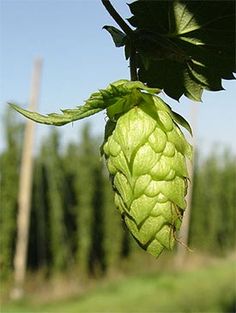
Let’s take a look at the most common problems with growing hops.
The Most Common Problems to Watch Out For
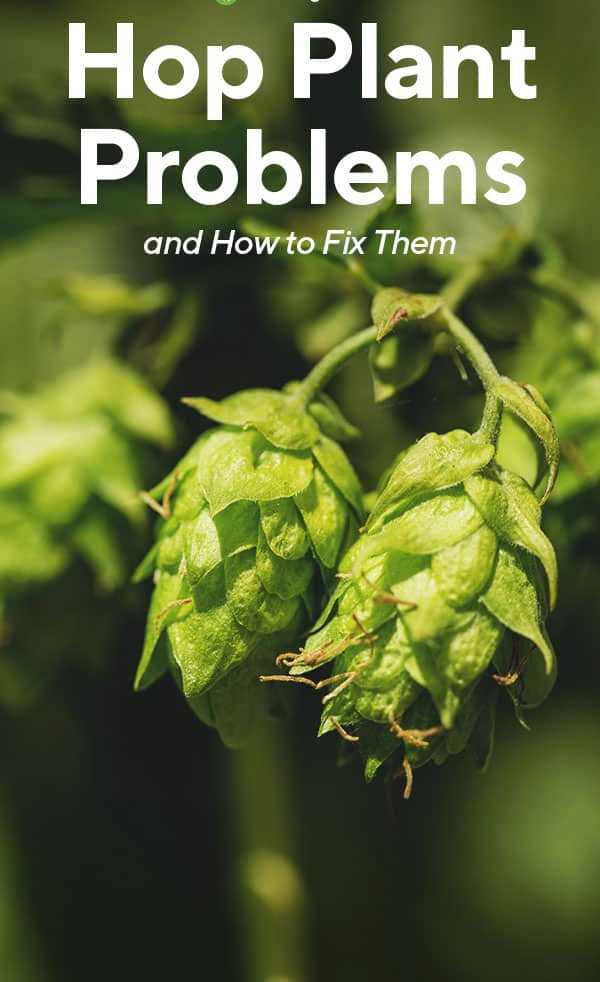
The hops plant (Humulus lupulus) is notoriously vigorous. You can practically watch them grow during the spring and summer. Abandoned plants will keep on growing without any input from you. But don’t let that convince you that they never have problems. They can and do.
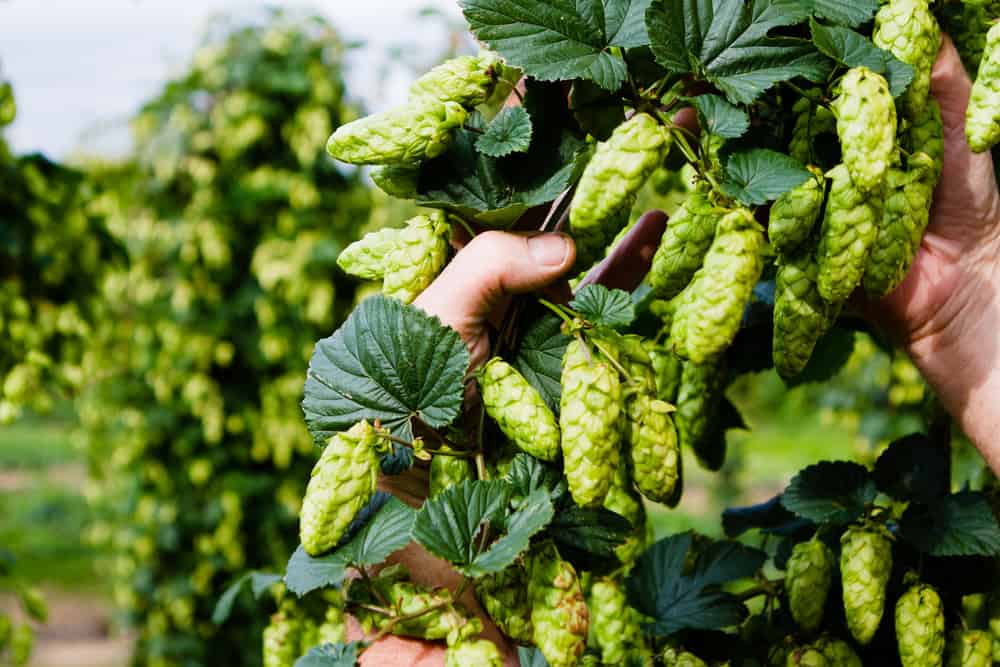
If you want the biggest, healthiest harvest ever, you need to watch out for these issues.
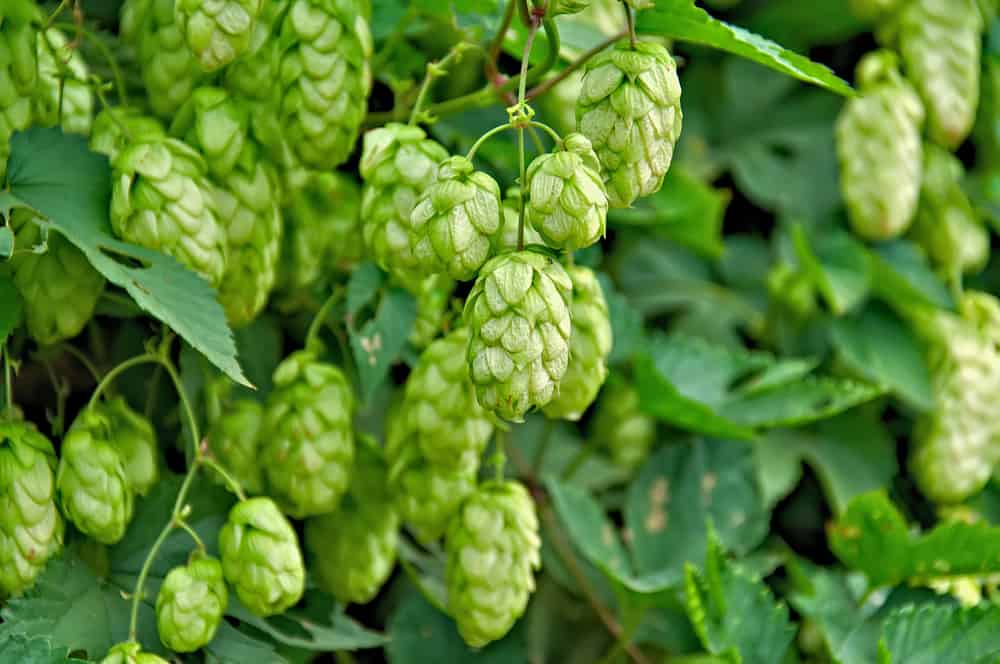
By the way, before we jump in, let’s clarify some terms. Technically, hops aren’t vines, they’re bines. The difference is that vines use suckers or tendrils to attach to objects, but bines use stiff hairs and thick stems. Cones are the bits that look similar to pine cones and that’s what you use to make beer.
The flowers are called inflorescences, and you may also see small fruits. The stem is the trunk-like bit that holds the leaves, cones, and flowers.
1. Curling, Yellow-Orange Leaves or Leaves Dropping Off
Every plant needs a specific type of soil to be able to grow properly and get all the nutrients they need to thrive. Hops prefer soil that is non-compacted, easy to drain, loose, slightly acidic, and full of nutrients. You also need to make sure that the plant gets plenty of air circulation to keep the roots cool and avoid weeds growing.
If the soil isn’t fertilized before planting then your hops plant could become nutrient deficient. A sign that your plant isn’t getting enough nutrients is when the leaves start dropping off. Before this stage, they turn to a dull orange color and curl down.
To avoid your plant from dying from a nutrient deficiency you will have to test the soil regularly for moisture levels and dryness. Normally, you will need to water a hops plant every two or three days unless it is extremely hot then you’ll need to water more.
Also, be sure to provide the correct amount of space between your plants when planting.
2. Excessive or Out-of-Control Growth
When you decide to plant hops in your garden you need to be willing to look after them frequently. Unlike, say, an aloe plant, hops need a lot of attention.
The speed at which this plant grows means that you need to keep an eye on it every day. The leaves will need pruning every two weeks and the shoots should be trimmed as well. If you don’t do this then the bines will get out of control and this will make it hard to harvest later on.
For hops to grow successfully you need to place the plant close to a structure that it can easily climb. For example, you can use a heavy rope or piece of wood as long as it is securely put in place to stabilize the plant while it’s growing.
Another part of maintenance is to clear the surrounding area at the bottom of the plant to prevent pests from infecting the plant. You should also prune the foliage from the bottom two feet of the stem in the mid-summer, as well. Pruning is a smart way to avoid many hops growing problems.
3. Stunted Growth
Even though the hops plant can grow up to 25 feet without proper care, your plant might stop growing. No matter if you have the right light, location, and soil your plant can hit some obstacle in its growing process.
This is particularly common during the first year of growth when the rhizomes are gaining strength and there isn’t enough bine growth or cone growth. Rhizomes are the roots of the plant where roots and shoots grow out from the nodes.
15 Hop Plant Problems and How to Deal With Them
By Sarah YulePrint

If you buy an item via links on this page, we may earn a commission. Our editorial content is not influenced by commissions. Read the full disclosure.
Hops are a magical plant that is used to treat anxiety, improve appetite and brew delicious beers, but they can be a tricky plant to grow. That’s because hops are subject to a number of different problems.
This leafy plant can grow up to 25 feet in the summer and dies back to the ground in the autumn. All that incredibly rapid growth can cause some challenges maintaining the health of the plant and managing potential problems that can occur during the growing process.
Let’s take a look at the most common problems with growing hops.
The Most Common Problems to Watch Out For
The hops plant (Humulus lupulus) is notoriously vigorous. You can practically watch them grow during the spring and summer. Abandoned plants will keep on growing without any input from you. But don’t let that convince you that they never have problems. They can and do.
If you want the biggest, healthiest harvest ever, you need to watch out for these issues.
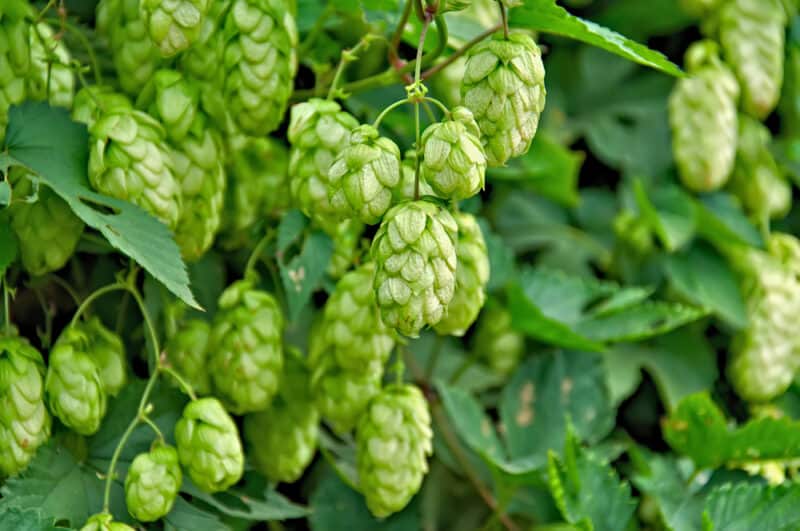
By the way, before we jump in, let’s clarify some terms. Technically, hops aren’t vines, they’re bines. The difference is that vines use suckers or tendrils to attach to objects, but bines use stiff hairs and thick stems. Cones are the bits that look similar to pine cones and that’s what you use to make beer.
The flowers are called inflorescences, and you may also see small fruits. The stem is the trunk-like bit that holds the leaves, cones, and flowers.
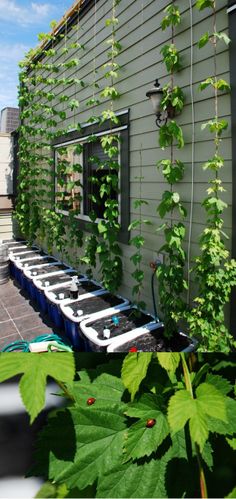
1. Curling, Yellow-Orange Leaves or Leaves Dropping Off
Every plant needs a specific type of soil to be able to grow properly and get all the nutrients they need to thrive. Hops prefer soil that is non-compacted, easy to drain, loose, slightly acidic, and full of nutrients. You also need to make sure that the plant gets plenty of air circulation to keep the roots cool and avoid weeds growing.
If the soil isn’t fertilized before planting then your hops plant could become nutrient deficient. A sign that your plant isn’t getting enough nutrients is when the leaves start dropping off. Before this stage, they turn to a dull orange color and curl down.
To avoid your plant from dying from a nutrient deficiency you will have to test the soil regularly for moisture levels and dryness. Normally, you will need to water a hops plant every two or three days unless it is extremely hot then you’ll need to water more.
Also, be sure to provide the correct amount of space between your plants when planting.
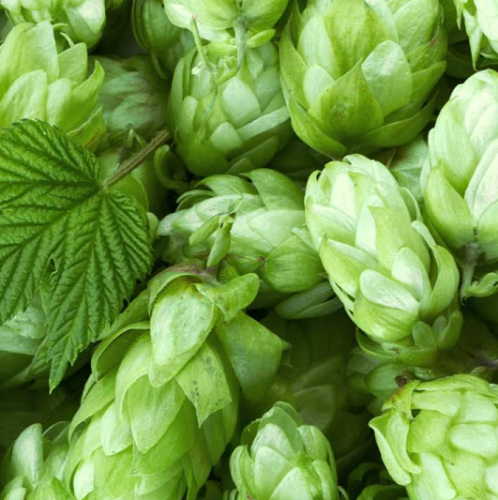
2. Excessive or Out-of-Control Growth
When you decide to plant hops in your garden you need to be willing to look after them frequently. Unlike, say, an aloe plant, hops need a lot of attention.
The speed at which this plant grows means that you need to keep an eye on it every day. The leaves will need pruning every two weeks and the shoots should be trimmed as well. If you don’t do this then the bines will get out of control and this will make it hard to harvest later on.
For hops to grow successfully you need to place the plant close to a structure that it can easily climb. For example, you can use a heavy rope or piece of wood as long as it is securely put in place to stabilize the plant while it’s growing.
Another part of maintenance is to clear the surrounding area at the bottom of the plant to prevent pests from infecting the plant. You should also prune the foliage from the bottom two feet of the stem in the mid-summer, as well. Pruning is a smart way to avoid many hops growing problems.
3. Stunted Growth
Even though the hops plant can grow up to 25 feet without proper care, your plant might stop growing. No matter if you have the right light, location, and soil your plant can hit some obstacle in its growing process.
This is particularly common during the first year of growth when the rhizomes are gaining strength and there isn’t enough bine growth or cone growth. Rhizomes are the roots of the plant where roots and shoots grow out from the nodes.
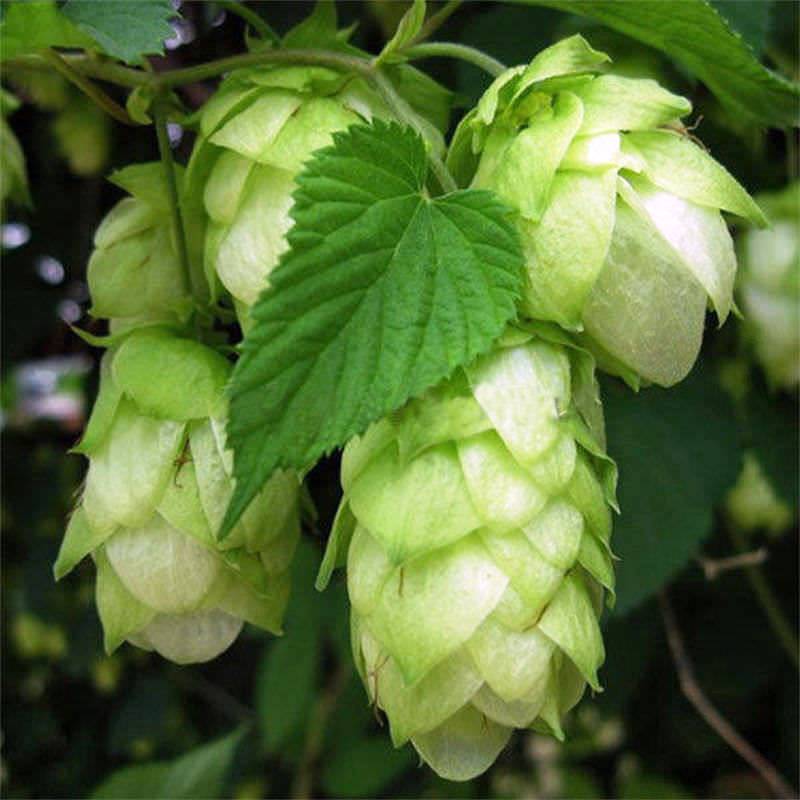
During the first year of growing hops, or any plant in general, you can often overwater the plant by being extra cautious. Although some people recommend watering a plant twice a day when the temperature is warm, this might be doing more harm than good.
Allow the top two inches of soil to dry out between waterings, but no more.
In addition to this, you can feed your hops plant 1/2 teaspoon of fertilizer during summer to provide extra nitrogen. Prune the bines back to two or three of the shoots to stop excess stems from growing and to provide space for cones to come through.
Then, you can tie the bines further back to the supporting apparatus so the plant gets maximum sun exposure and has the best chance of growing to its full length.
4. Blacked or Yellow Leaves and Wilting Stems
Black root rot is a fungal disease (Phytophthora citricola) that causes water lesions on the stem, as well as wilting or yellowing leaves. The lesions can also form on the root.
The best way to avoid it is to plant in well-draining soil and don’t overwater. Also, be careful not to damage the roots during cultivation or planting.
5. Cankers or Wilting Bines
Fusarium canker, also known as cone tip blight, is a disease that causes cankers to form and wilting bines when the temperatures rise. The leaves then turn brown and the interior of the leaves slowly die off.
15 Hop Plant Problems and How to Deal With Them
By Sarah YulePrint

If you buy an item via links on this page, we may earn a commission. Our editorial content is not influenced by commissions. Read the full disclosure.
Hops are a magical plant that is used to treat anxiety, improve appetite and brew delicious beers, but they can be a tricky plant to grow. That’s because hops are subject to a number of different problems.
This leafy plant can grow up to 25 feet in the summer and dies back to the ground in the autumn. All that incredibly rapid growth can cause some challenges maintaining the health of the plant and managing potential problems that can occur during the growing process.
Let’s take a look at the most common problems with growing hops.
The Most Common Problems to Watch Out For
The hops plant (Humulus lupulus) is notoriously vigorous. You can practically watch them grow during the spring and summer. Abandoned plants will keep on growing without any input from you. But don’t let that convince you that they never have problems. They can and do.
If you want the biggest, healthiest harvest ever, you need to watch out for these issues.

By the way, before we jump in, let’s clarify some terms. Technically, hops aren’t vines, they’re bines. The difference is that vines use suckers or tendrils to attach to objects, but bines use stiff hairs and thick stems. Cones are the bits that look similar to pine cones and that’s what you use to make beer.
The flowers are called inflorescences, and you may also see small fruits. The stem is the trunk-like bit that holds the leaves, cones, and flowers.
1. Curling, Yellow-Orange Leaves or Leaves Dropping Off
Every plant needs a specific type of soil to be able to grow properly and get all the nutrients they need to thrive. Hops prefer soil that is non-compacted, easy to drain, loose, slightly acidic, and full of nutrients. You also need to make sure that the plant gets plenty of air circulation to keep the roots cool and avoid weeds growing.
If the soil isn’t fertilized before planting then your hops plant could become nutrient deficient. A sign that your plant isn’t getting enough nutrients is when the leaves start dropping off. Before this stage, they turn to a dull orange color and curl down.
To avoid your plant from dying from a nutrient deficiency you will have to test the soil regularly for moisture levels and dryness. Normally, you will need to water a hops plant every two or three days unless it is extremely hot then you’ll need to water more.
Also, be sure to provide the correct amount of space between your plants when planting.
2. Excessive or Out-of-Control Growth
When you decide to plant hops in your garden you need to be willing to look after them frequently. Unlike, say, an aloe plant, hops need a lot of attention.
The speed at which this plant grows means that you need to keep an eye on it every day. The leaves will need pruning every two weeks and the shoots should be trimmed as well. If you don’t do this then the bines will get out of control and this will make it hard to harvest later on.
For hops to grow successfully you need to place the plant close to a structure that it can easily climb. For example, you can use a heavy rope or piece of wood as long as it is securely put in place to stabilize the plant while it’s growing.
Another part of maintenance is to clear the surrounding area at the bottom of the plant to prevent pests from infecting the plant. You should also prune the foliage from the bottom two feet of the stem in the mid-summer, as well. Pruning is a smart way to avoid many hops growing problems.
3. Stunted Growth
Even though the hops plant can grow up to 25 feet without proper care, your plant might stop growing. No matter if you have the right light, location, and soil your plant can hit some obstacle in its growing process.
This is particularly common during the first year of growth when the rhizomes are gaining strength and there isn’t enough bine growth or cone growth. Rhizomes are the roots of the plant where roots and shoots grow out from the nodes.
During the first year of growing hops, or any plant in general, you can often overwater the plant by being extra cautious. Although some people recommend watering a plant twice a day when the temperature is warm, this might be doing more harm than good.
Allow the top two inches of soil to dry out between waterings, but no more.
In addition to this, you can feed your hops plant 1/2 teaspoon of fertilizer during summer to provide extra nitrogen. Prune the bines back to two or three of the shoots to stop excess stems from growing and to provide space for cones to come through.
Then, you can tie the bines further back to the supporting apparatus so the plant gets maximum sun exposure and has the best chance of growing to its full length.
4. Blacked or Yellow Leaves and Wilting Stems
Black root rot is a fungal disease (Phytophthora citricola) that causes water lesions on the stem, as well as wilting or yellowing leaves. The lesions can also form on the root.
The best way to avoid it is to plant in well-draining soil and don’t overwater. Also, be careful not to damage the roots during cultivation or planting.
5. Cankers or Wilting Bines
Fusarium canker, also known as cone tip blight, is a disease that causes cankers to form and wilting bines when the temperatures rise. The leaves then turn brown and the interior of the leaves slowly die off.
It’s caused by the fungus Fusarium sambucinum, and is worse during wet weather or if there is poor drainage in the soil.
Your best offense is to maintain good plant spacing, ensure that your soil is well-draining, and water in the morning. In fact, all of these practices are a good offense against hops growing problems.
If your plants are infected, add a little lime to the soil to increase soil pH slightly can help delay the disease cycle.
6. Curled Flowers and Brittle Shoots
Downy mildew is the most common disease that affects the hops plant. Normally, it causes brittle shoots and the flowers to curl. It often happens in cold, when you’ll notice blackening bines. Bines may also fall off their support and you might see black lesions on the undersides of the leaves.
Caused by the oomycete Pseudoperonospora humuli, it can be extremely difficult to manage.
Start by maintaining good garden practices like proper watering, well-draining soil, and cleaning your tools between use in the garden. You should also maintain good distancing to increase air circulation. Plant resistant cultivars such as ‘Magnum,’ ‘Perle,’ ‘Orion,’ ‘Wye,’ and ‘Challenge.’
Prune away infected leaves, and use a copper fungicide spray to stop or delay the disease’s progression. Finally, if you just can’t get things under control, harvest the cones even if it is a bit earlier than you prefer. It’s better to get some harvest than none at all.
7. Yellow Leaves and Swollen Bines
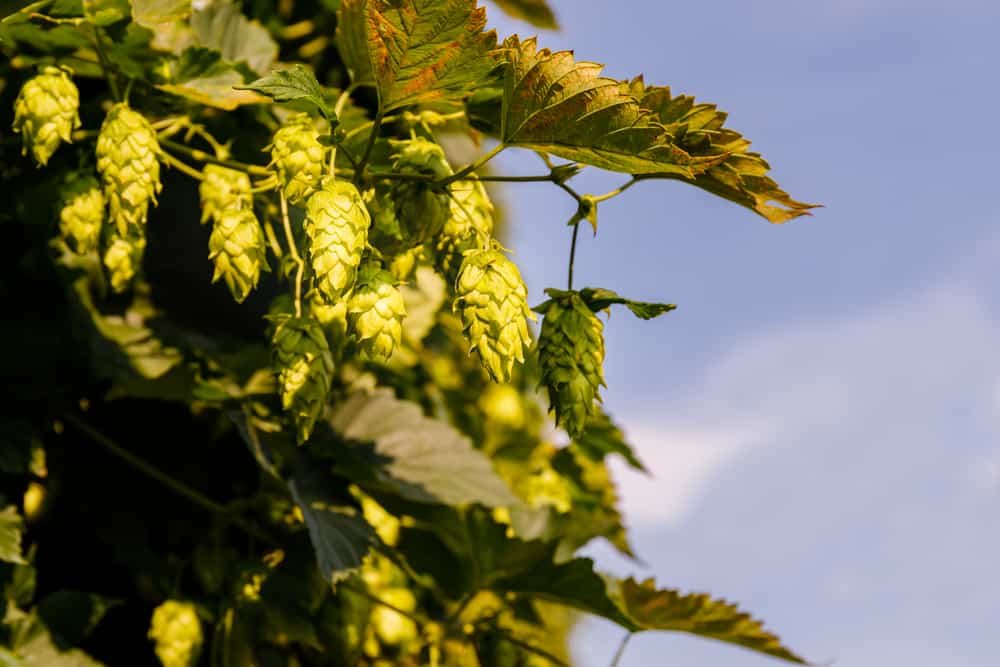
If your soil has a lot of nitrogen, Verticillium wilt is more likely to develop on your plant. The main sign that your plant is been affected by this disease is if the leaves turn yellow and the bines become swollen. The yellowing usually starts at the base of the plant and moves up. Curling leaves are also common.
If you cut open the bines, the interior will be discolored and dark brown.
This disease can return year after year.
There are two different fungi that can cause this disease: Verticillium nonalfalfae (formerly V. albo-atrum) and V. dahliae.
Crop rotation, good garden hygiene, keeping weeds out, and removing infected plants are the only way to control this disease, as well as many other hops growing problems.
8. Discolored Cones or Gray Mold
Any sign of mold is usually a bad sign, but fortunately, gray mold isn’t too big of a deal. If you notice brown or yellow discoloration on the cone tips or any other part of the plant
then you should check for gray mold. Mold prefers hot, humid environments so this could be a problem if you live in a particularly warm area.
If symptoms of this disease are present, a copper fungicide can control the situation. This fungicide is also good for dealing with several different of the hops growing problems on this list.
9. Powdery Coating on Leaves
Unlike downy mildew, powdery mildew results in a powdery, flour-like dusting of fungus on the foliage and cones. However, before this stage, it starts as a collection of pale green and yellow spots on the leaves which causes white blotches to appear.
Even though this disease, which is caused by the fungus Podosphaera macularis, tends to spread slowly, it can eventually cover the whole plant and destroy it. A disease like this thrives in windy and dark conditions where there is little sunlight.
Proper spacing and pruning to improve air circulation, as well as planting resistant varieties can help you avoid this particular problem.
‘Cascade,’ ‘Comet,’ ‘Mt. Hood,’ ‘Newport,’ ‘Nugget,’ and ‘TriplePearl’ are all resistant.
Finally, regular applications of a copper fungicide can help control the mildew. Bonide Copper Fungicide is a reliable option that can be used for numerous different issues.
10. Red or Orange Stem Interiors
Red crown rot (Phomopsis tuberivora) causes yellowing leaves, and a lack of lateral branches. You can be certain you have this disease if you cut open a stem and see red and orange discoloration that spreads throughout the interior tissues of the plant.
It dramatically reduces your harvest and can live in the soil. That’s why crop rotation is essential, as is taking care not to put too much organic matter into the soil. Of all the hops growing problems, this isn’t one of the most common, but the symptoms are quite distinct.
11. White Mold on Leaves or Bines
White mold or Sclerotinia rot shows up on the lower stem of the plant and as water lesions just below the soil line. Eventually, you’ll see fluffy white fungal growth further up the stem and on the leaves, along with yellow lesions.
White mold (Sclerotinia sclerotiorum) thrives in wet, cool climates like the Pacific Northwest.
Watering at the soil level in the morning, removing the lower leaves, and allowing the top two inches of soil to dry out between waterings should be enough to keep the situation under control.
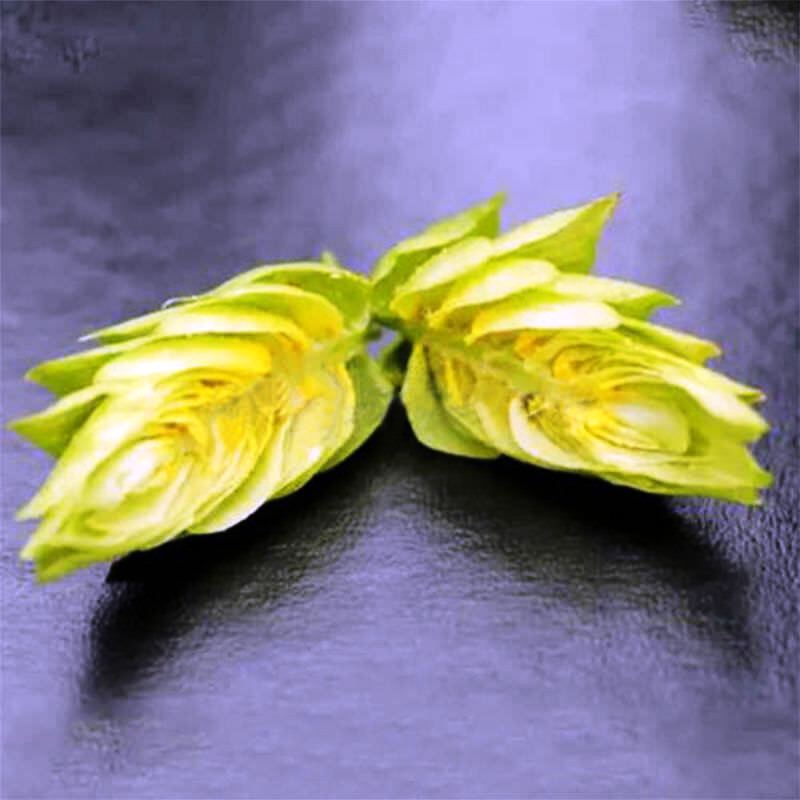
12. Black Mold on Leaves or Bines
Black mold is caused by fungal species in the Cladosporium genus. It causes brownish-black growth on the stems and leaves and discoloration on the cones. It’s usually most visible on leaves that are shaded on the inside of the plant.
It’s one of the less common hop problems and doesn’t usually destroy your plant, but you should trim away any badly infected leaves or cones.
13. Mottled Discoloration and Dropping Leaves
Mosaic virus is an aphid-borne disease that can be deadly to a hops plant. It causes stunted growth, molting leaves, and an overall discolored look. There is no cure. You’ll just have to pull the plants and start over, though you can usually still use the cones if they aren’t too impacted.
14. Small Holes in the Leaves
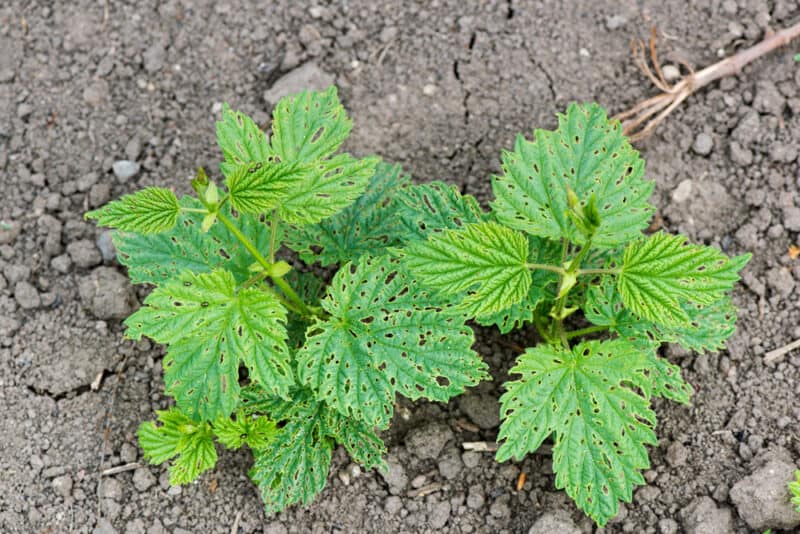
Flea beetles chew tiny little shotholes through the leaves of plants, and they can be especially damaging on young plants. In addition to the tiny holes, you might also see the small insects as they jump around (like little fleas) on the plant. If you aren’t certain, you can place yellow sticky traps around the plants to catch them.
Row covers, trap crops such as radishes, and a spinosad-based spray can help control the situation.
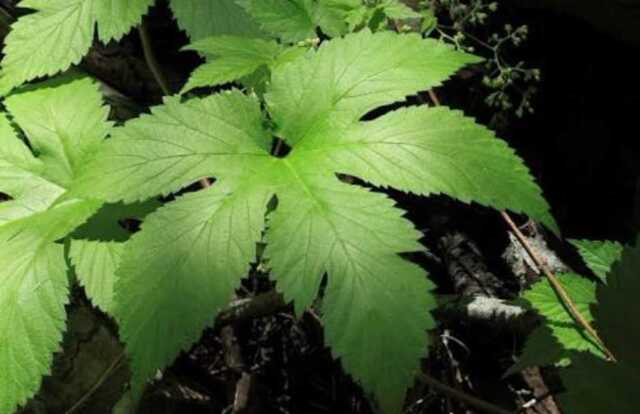
15. Curled, Wilted Leaves and Leaf Drop
If the leaves of your plant are curling and wilting, you may have an aphid infestation. There are many species that might attack your plants, including the hop aphid (Phorodon humuli). Left unchecked, it can cause the leaves to drop off the plant and reduce the bine’s vigor. Aphids also spread diseases.
Neem oil applied once every few weeks can help control the pests. You should also encourage or purchase predators such as lady beetles.
General Tips for Controlling Diseases and Pests
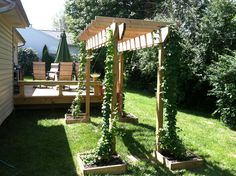
Ultimately, you can do everything right when looking after your hops plants, but sometimes they form diseases or pests that can ruin your harvest. For some extra preventive measures, you can try creating more space for your hops plant.
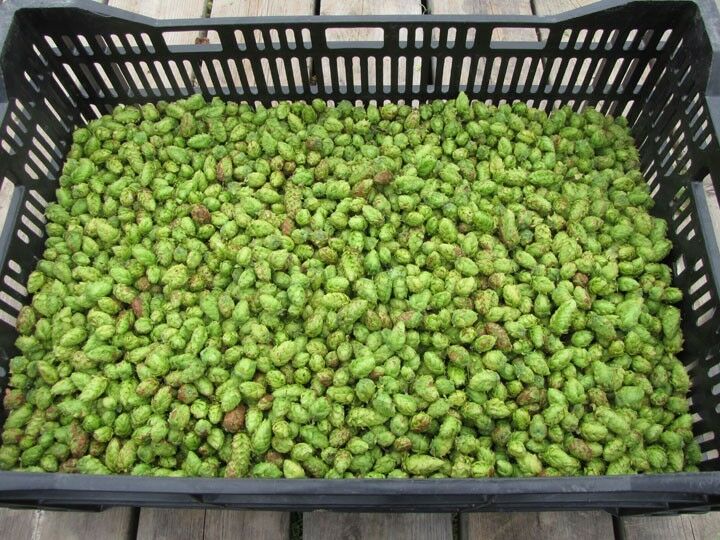
If your plants are too close to each other, there is more risk of diseases spreading quickly. Aim to keep at least six feet of distance between plants.
Another tip is to water the plant in the morning to allow the moisture to dry out during the day. Even though it might be more convenient to water your plant in the evenings after work, or other tasks, in the morning is ideal for the health of your hops plant.
Of course, you should also clear up the leftover leaves regularly from the base of the plant. This will prevent other pests from making a home in your plant. Then, be sure to practice regular crop rotation. This is always a smart garden practice.
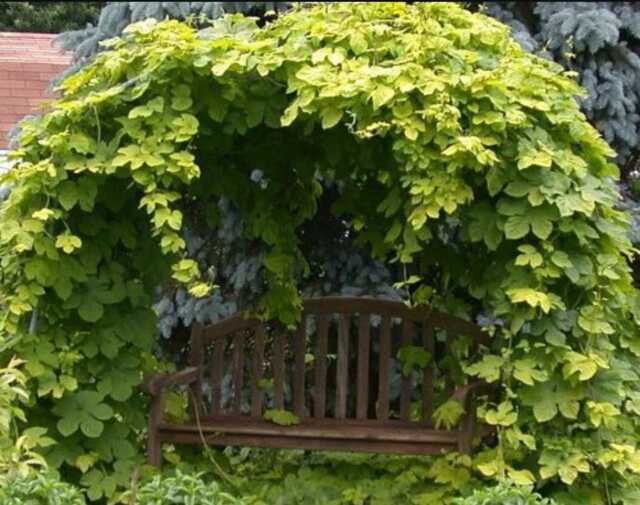
If you follow all these tips and look out for signs of the diseases mentioned above, you’ll be able to tackle ant hops growing problem that comes your way. Yes, I do sell hops seeds on this site as well. Happy hops planting!
Henry Any questions or if buying, contact me HERE



